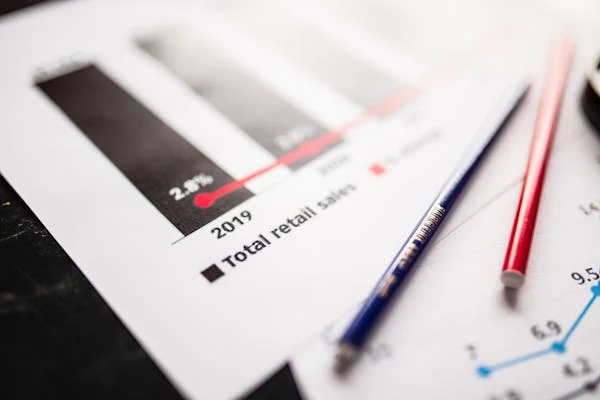Mergers and acquisitions in the tech world are heating up fast. From artificial intelligence to fintech and healthtech, companies are not just scaling—they’re getting bought out for serious sums. But what’s the real price tag on these deals? In this post, we’re breaking down 30 powerful stats around median deal sizes in AI, fintech, and healthtech acquisitions—and more importantly, what they mean for startups, founders, and investors. Let’s dive straight into it.
1. Median AI acquisition deal size in 2023: $68 million
Why this number matters
AI has been the headline act in tech for years now. But not all AI acquisitions are billion-dollar headlines. In 2023, the median deal size was around $68 million. This number tells us what a typical acquisition looks like — not the biggest, not the smallest, but the middle of the pack.
This stat shows that acquirers are willing to pay meaningful money for proven AI solutions, especially those with proprietary models or deep learning capabilities.
What contributes to the $68 million mark?
Most AI startups acquired at this valuation tend to share some traits:
- They’ve got a working product (not just a prototype).
- Their tech is being used in real-world settings.
- They have early revenue or traction.
- Their team includes seasoned engineers or researchers.
Big valuations like OpenAI or Anthropic are outliers. But in the middle range, $68 million is a sign that a lot of startups are hitting solid exits after 3–6 years of work.
What should founders focus on?
If you’re building an AI startup, keep these levers in mind:
- Build real IP: Don’t just wrap APIs. Proprietary models or unique data sources add valuation weight.
- Secure early adopters: Customer usage validates you far more than just funding.
- Avoid bloat: Keep teams lean and laser-focused. Acquirers want smart, tight teams, not overbuilt org charts.
Also, don’t wait too long. Many startups plateau because they chase perfection or over-raise. You want to sell when growth is steady, not desperate.
2. Median Fintech acquisition deal size in 2023: $125 million
Fintech gets bigger exits
Fintech continues to attract attention — and capital. With a median acquisition deal size of $125 million in 2023, the sector outpaces AI in median valuations. Why?
Fintechs often sit closer to revenue. Many of them offer infrastructure or consumer-facing apps that generate transaction fees, lending revenue, or SaaS subscriptions.
Where is the $125 million coming from?
Buyers are typically:
- Traditional financial institutions wanting to modernize.
- Big Tech players entering finance.
- PE-backed rollups looking for synergy.
These acquirers aren’t just buying tech — they’re buying regulatory licenses, recurring revenue, and customer trust.
What should Fintech founders focus on?
To get to this deal size:
- Own your regulatory stack: Acquirers love when compliance risk is handled in-house.
- Show net revenue retention: It’s not just about ARR. Can you grow your revenue without growing your cost base?
- Create defensible distribution: Whether it’s a bank partner network or a strong DTC channel, having your own distribution is key.
Many buyers are not just buying for the tech, but for the go-to-market engine.
3. Median Healthtech acquisition deal size in 2023: $90 million
Healthtech holds steady
At $90 million, the median Healthtech deal size suggests a healthy, consistent exit environment. This makes sense. Healthtech is often more regulated and slower-moving, but once traction is proven, it leads to strong buyer interest.
Who’s buying Healthtech?
- Hospitals and provider networks
- Insurance companies
- Pharma and medtech firms
They’re usually looking to plug a tech gap in their offering — whether that’s digital diagnostics, scheduling tools, telehealth platforms, or remote monitoring systems.
What creates a $90M deal?
- Clinical validation: If you’ve done studies, you’re ahead.
- Regulatory pathways: If you’ve navigated HIPAA or FDA, you’re much more appealing.
- Provider relationships: If you’ve landed integrations with hospitals or clinics, it de-risks adoption.
Founders should think about how their product fits into a larger healthcare ecosystem — not just whether it’s cool tech. Healthtech buyers are risk-averse and value stability and proof.
4. Median AI deal size for U.S.-based targets in 2022: $80 million
The U.S. AI premium
In 2022, AI startups based in the U.S. had a median acquisition value of $80 million. That’s a bit higher than the global number in 2023, and it reflects a premium on U.S.-based companies.
Why does geography matter?
- U.S. startups tend to have easier access to top-tier VCs.
- They can recruit elite AI talent from academia and Big Tech.
- Buyers are more concentrated in North America.
How to take advantage if you’re U.S.-based
- Stay focused on commercial use cases. The U.S. market rewards utility over novelty.
- Build in public — U.S. companies that share progress and benchmarks attract inbound M&A interest faster.
- Be acquisition-ready. U.S. acquirers move fast when they find a fit. Keep your cap table clean and your IP fully assigned.
The key takeaway? If you’re building in the U.S., you have leverage. Use it by positioning yourself as a strategic buy, not just a product.
5. Median Fintech deal size for Europe-based targets in 2023: $110 million
Europe is catching up
At $110 million, European Fintechs are seeing strong exit values. While slightly below the U.S. median, this still shows that mature Fintechs in Europe are commanding big valuations.
What’s different in Europe?
- Fragmented markets mean startups often go deep in a few countries rather than scaling globally right away.
- Regulatory diversity creates moats. A startup compliant in Germany, France, and the UK has built something complex and hard to replicate.
What buyers love in European Fintechs
- Strong licensing (like e-money or payment licenses)
- Established banking partnerships
- Cross-border payments infrastructure
- Multilingual, multi-currency support
Founders in Europe should lean into complexity. The harder your tech is to replicate due to regulation or market nuances, the more buyers are willing to pay.
6. Median Healthtech deal size for Series C-stage companies in 2023: $135 million
Series C in Healthtech brings strong exits
Healthtech startups reaching Series C in 2023 saw a median acquisition value of $135 million. This suggests that once a company reaches later-stage growth in the health space, buyers are willing to pay a premium.
At this point, startups usually have:
- Regulatory clearance (HIPAA, FDA, etc.)
- Steady revenue with enterprise contracts
- A product being used in clinical or insurance settings
Why buyers pay more at Series C
Buyers see reduced risk. At Series C, your tech is validated, and you’re not experimenting — you’re executing. Larger companies like insurers, hospital networks, or medtech firms don’t want experiments. They want plug-and-play tech they can scale.
Founders’ focus at this stage
- Lock down enterprise deals: Selling to large health systems takes time, but one customer can double your valuation.
- Document clinical outcomes: Buyers love charts, but they trust published studies even more.
- Prepare for integration: Your product must be able to fit easily into an existing hospital or insurance stack.
At this stage, even slow growth can justify a solid valuation if there’s a clear path to scale with the buyer’s distribution or infrastructure.
7. Median AI acquisition deal size by Big Tech acquirers in 2022: $300 million
Big Tech buys big
In 2022, Big Tech firms (like Google, Amazon, Meta, Microsoft) acquired AI startups for a median price of $300 million. This number is far higher than the overall AI average.
Why? Big Tech isn’t just buying tech. They’re buying:
- Teams with deep ML expertise
- Proprietary datasets
- IP that can be integrated into their existing products
- Strategic advantages in key areas like language, vision, and search
What kind of startups attract $300M deals?
These aren’t small tools. These are:
- Core infrastructure providers (vector databases, model frameworks)
- Applied AI with major user traction (like GitHub Copilot)
- Domain-specific LLMs or transformers trained on unique datasets
If you’re building with Big Tech in mind
- Get to know their product roadmaps: They buy where they lag or want to dominate.
- Publish cutting-edge benchmarks: Big Tech follows academic papers and GitHub stars closely.
- Have a clear tech moat: Open-source everything won’t help you here — they want what they can’t build easily in-house.
These are rare exits, but if you’re in the infrastructure or foundation model game, this is your bar.
8. Median Fintech M&A size during H1 2022: $100 million
2022 saw stable fintech M&A
In the first half of 2022, fintech acquisitions averaged $100 million in median deal size. This was before market pullbacks fully set in, and it showed that the space remained attractive despite public market volatility.
Buyers in this period included:
- Traditional banks acquiring to digitize faster
- Fintech scale-ups buying competitors or niche solutions
- PE firms bundling fintech tools
What fueled $100M deals?
- Embedded finance platforms
- API-first banking infrastructure
- SaaS tools for compliance, onboarding, and KYC
What mattered wasn’t flashiness — it was backend functionality that drove real efficiency.
If you’re aiming for this range
- Focus on B2B infrastructure: Fintech APIs are valued more consistently than consumer apps.
- Create repeatable, scalable revenue: Buyers love stable, contract-based revenue.
- Show cost savings: Proving how your product reduces costs for financial institutions directly increases valuation.
During rocky macro periods, buyers look for financial efficiency, not just growth.
9. Median Healthtech exit deal size via acquisition in 2023: $92 million
Steady exits in Healthtech
In 2023, Healthtech startups that exited through acquisitions had a median deal value of $92 million. That’s just under the broader $90M average but reaffirms a consistent demand for healthcare innovation.
These deals usually happen when:
- A product fits neatly into a payer-provider workflow
- Clinical validation is present
- The startup serves a growing patient need, like mental health or chronic disease monitoring
What this tells Healthtech founders
- You don’t need to be at $50M in ARR to get acquired.
- You do need traction with real providers, patients, or insurers.
- You also need clean operations — buyers don’t want messy cap tables or pending regulatory issues.
Tactical tips to stay on track
- Get procurement-friendly: Make onboarding with health systems simple.
- Avoid complex pricing: Buyers want models they can understand and adopt.
- Build long-term case studies: Healthcare moves slowly — 12-month usage data beats 1-month growth spikes.
The key is dependability. If buyers trust you to perform post-acquisition, they’ll pay for it.
10. Median AI startup acquisition by non-tech acquirers in 2022: $45 million
Traditional industries join the AI game
In 2022, companies outside the tech sector — think manufacturing, logistics, real estate, or energy — bought AI startups for a median of $45 million. These are non-traditional buyers who need to catch up on automation, efficiency, and predictive insights.
Their goal? Add AI capabilities they can’t build themselves.
Who are these buyers?
- Industrial firms needing computer vision for inspections
- Retailers using AI for demand forecasting
- Agriculture or mining firms looking to optimize logistics
- Real estate firms analyzing pricing and customer churn
They often lack the internal AI teams to build from scratch, so they buy lean startups with proven tools.
How to get acquired by these buyers
- Build with a specific vertical in mind: Niche trumps general-purpose in these sectors.
- Simplify the tech: Avoid jargon. Focus on how it saves time, money, or improves accuracy.
- Show ROI: These buyers want to see impact in months, not years.
A strong track record with even a few industry clients can justify a $45M exit — especially if you’re solving a problem they feel every day.
11. Median Fintech acquisition deal size in APAC, 2023: $88 million
The APAC fintech scene is heating up
In 2023, the median acquisition deal size for Fintech startups in the Asia-Pacific (APAC) region stood at $88 million. While slightly lower than the global average, this still reflects significant buyer interest in fast-growing financial innovation across Asia.
What’s driving deals in this region?
- Mobile-first economies like India, Indonesia, and Vietnam are spurring fintech adoption.
- Governments are pushing digital payment infrastructure and financial inclusion.
- Traditional banks are playing catch-up and buying proven digital products to scale.
Startups in APAC often operate in large, underbanked markets. This presents a huge growth opportunity — and buyers are willing to pay for access.
What APAC fintechs can do to hit this range
- Focus on core infrastructure: Wallets, payments, credit scoring, and compliance tech are in demand.
- Prove traction in Tier 2/3 cities: Localized adoption matters as much as revenue size.
- Lock in partnerships with banks or telcos: These alliances make you acquisition-ready and trustworthy.
Founders should understand that exits in APAC often take longer but are just as valuable. The $88M median shows that when the pieces align — product-market fit, regulation, and scale — buyers are willing to pay real money.
12. Median Healthtech M&A in the U.S., 2022: $100 million
A round number with deep meaning
In 2022, the median Healthtech acquisition deal in the United States came in at $100 million. This shows a continued appetite among American acquirers for digital health tools that reduce cost, improve access, or simplify care delivery.
Buyers include:
- Major hospital networks
- Insurance giants like UnitedHealth and Cigna
- Tech-health hybrids like Teladoc or CVS Health
These acquirers aren’t experimenting. They’re looking for solutions that already work at scale.
What gets you to a $100M exit?
- Real integration with EHR systems like Epic or Cerner
- Demonstrated improvements in health outcomes or operational cost savings
- HIPAA compliance and a strong track record with patient data privacy
The $100M mark is often achieved by companies with:
- $10–20M in ARR
- 3+ years of clinical deployment
- Partnerships with insurers or large providers
Founders should focus on sustainability. If you’ve proven you can reduce readmissions or improve population health, you’ve created something acquirers are ready to pay for.
13. Median AI acquisition of talent-focused deals (acquihires), 2023: $20 million
Acquihires are still alive — but smaller
In 2023, the median deal size for AI acquihires — where buyers mainly want the team, not the product — was $20 million. These deals typically involve smaller companies or even shut-down startups with elite engineering teams.
Who’s doing these deals?
- Big Tech firms constantly scouting AI talent
- Mid-sized software companies needing in-house ML capabilities
- Cloud providers looking to strengthen their AI platform teams
Unlike product buys, these deals don’t focus on IP or revenue — they focus on the people.
If you’re considering this route
- Build a rockstar team with real applied experience.
- Engage in open-source or public benchmarks: Get noticed for your engineering quality.
- Keep equity distribution fair: Acquihires often come with job offers, and founders usually negotiate the team’s packages.
This isn’t the dream exit — but it’s a great outcome for teams who built something valuable but couldn’t find product-market fit.
14. Median Fintech acquisition deal size in LATAM, 2023: $75 million
Latin America’s fintech wave
The Latin American (LATAM) fintech scene is exploding. In 2023, the median acquisition size for fintech startups in the region hit $75 million.
That number may seem modest compared to U.S. and European figures, but in the context of LATAM’s economic landscape, it represents healthy exits and growing M&A interest.
What’s driving fintech M&A in LATAM?
- Low banking penetration: Many LATAM countries have millions of unbanked citizens.
- Hyper-inflation and currency volatility: Consumers turn to digital tools for stability.
- Rapid growth of mobile payments and wallets
Companies like Nubank and Mercado Pago have shown there’s a massive appetite for modern financial tools in the region — and that’s attracting buyers.
How LATAM founders can reach a $75M exit
- Solve infrastructure gaps, not just UX issues: Core banking tech and compliance tools get acquired faster than flashy apps.
- Expand regionally: Cross-border operations make you more strategic.
- Partner with local governments or regulators: This builds trust and eases buyer concerns.
The market is still maturing, but this stat confirms that regional champions can create meaningful exits — especially when they solve foundational issues in financial inclusion.
15. Median Healthtech deal size by private equity acquirers, 2023: $140 million
PE firms pay a premium for Healthtech
In 2023, private equity firms acquiring Healthtech companies paid a median price of $140 million. This is one of the highest medians on our list, and it reflects PE’s growing interest in scalable, profitable health startups.
Why PE loves Healthtech
- Predictable revenue from SaaS models in health
- Room for operational improvement and margin expansion
- Long-term value via bolt-ons or platform plays
PE firms aren’t just looking for innovation — they’re looking for strong unit economics and repeatable success.

How to attract PE buyers
- Show high gross margins: PE likes EBITDA, not just growth.
- Build sticky relationships: Long-term contracts with health systems and insurers boost valuation.
- Keep the cap table clean: PE diligence is deep — disorganized financials or unclear IP rights are red flags.
Unlike strategic buyers who may buy early, PE firms tend to wait for you to mature. But once you’re there, they can offer very strong exits — and often a chance to stay and scale with them.
16. Median AI acquisition for companies with proprietary LLMs, 2023: $150 million
LLM startups command a premium
In 2023, the median deal size for AI startups with proprietary large language models (LLMs) was a hefty $150 million. This isn’t surprising — as LLMs became central to AI product development, owning your own model became a big strategic edge.
What makes proprietary LLMs so valuable?
- They offer flexibility and customization that off-the-shelf models don’t.
- They reduce long-term API costs and dependencies on third-party providers.
- They can be fine-tuned for specific domains, increasing value for acquirers in niche industries.
Buyers want the tech — but more importantly, they want the capability to build, improve, and scale LLMs internally.
How to build toward this kind of exit
- Train on exclusive datasets: This helps avoid generic results and adds value.
- Show usage at scale: Real-world results in customer support, compliance, healthcare, or legal workflows are compelling.
- Focus on defensibility: If another team can replicate what you’ve done in a few weeks, your model isn’t worth much.
The $150M median reflects buyers’ willingness to pay for deep IP and performance that beats general-purpose models — especially in high-stakes environments.
17. Median Fintech regtech startup acquisition deal size, 2023: $70 million
Regtech’s quiet but critical role
In 2023, Fintech startups focused on regulatory technology (regtech) were acquired for a median of $70 million. These deals don’t make headlines, but they’re essential. Regtech tools help companies stay compliant, manage risk, and avoid fines — and that makes them extremely valuable to acquirers.
Who buys regtech?
- Banks and lenders needing to digitize compliance
- Fintechs expanding into new geographies or verticals
- Insurance firms dealing with complex, changing rules
Regtech is a B2B category with high switching costs, recurring revenue, and strong customer loyalty — all features that increase acquisition appeal.
How to hit the $70M mark
- Solve deep compliance pain points: Think AML, KYC, transaction monitoring, or fraud.
- Build integrations with core systems: If you plug into banking, ERP, or CRM software, you’re more valuable.
- Document how you reduce risk or cost: Even modest ROI shown through metrics can justify your value.
If your product makes a compliance officer’s life easier, you’ve built something that’s quietly indispensable — and acquirers will pay for that.
18. Median Healthtech acquisition involving digital therapeutics, 2023: $95 million
Digital therapeutics are gaining real traction
Healthtech startups in digital therapeutics (DTx) — apps or platforms that deliver clinically-validated treatment — were acquired for a median of $95 million in 2023.
These aren’t just wellness apps. They’re:
- FDA-cleared
- Used in conjunction with or in place of medications
- Monitored by providers or payers

Why buyers want in
- Pharma companies are looking for digital extensions of their drug portfolios.
- Payers and employers want scalable, non-invasive treatment options.
- Providers are embracing software-based care, especially in chronic disease and mental health.
How to build toward a $95M exit in this space
- Pursue regulatory pathways early: FDA or CE marks add significant valuation.
- Conduct outcome-based studies: You’ll need clinical results, not just user engagement.
- Partner with payers: Reimbursement validation goes a long way with buyers.
Buyers are shifting from curiosity to commitment — and startups that can prove efficacy and scalability are seeing big exits.
19. Median AI acquisition for startups under 5 years old, 2023: $60 million
Young AI startups are exiting fast
In 2023, AI startups less than 5 years old were acquired for a median of $60 million. This shows that you don’t need decades of operation or revenue scale to command a meaningful exit — especially in a fast-moving space like AI.
Why younger startups get picked up
- They often have focused, nimble teams.
- Their technology isn’t bloated by legacy decisions.
- They may fill a very specific technical gap in an acquirer’s roadmap.
In many cases, buyers prefer younger startups because integration is simpler and the team is still hungry.
What matters most for early-stage exits
- Sharp differentiation: Your tech should be solving a niche problem better than anyone else.
- Strong technical branding: Blog posts, papers, GitHub repos — visibility builds credibility.
- Early customer proof points: Even a few B2B pilots can be enough if your tech delivers real results.
Don’t worry about hitting $10M ARR or raising a huge Series B. In AI, speed to insight and the quality of your team are sometimes all it takes.
20. Median Fintech M&A deal for payment processors, 2023: $140 million
Payments still lead the pack
In 2023, Fintech companies focused on payment processing saw median acquisitions of $140 million. Payments remain the backbone of the fintech world, and processing infrastructure continues to be one of the most valuable segments.
Who’s buying payment processors?
- Banks building new digital rails
- Global commerce platforms seeking vertical integration
- Private equity firms bundling multiple processors
The value in this segment comes from scale, reliability, and margins — not flashiness.
How to maximize value in payment processing
- Focus on speed and uptime: Infrastructure reliability is your strongest selling point.
- Get licensed: Owning or operating under financial licenses increases defensibility.
- Show throughput growth: Buyers want to see rising volumes and merchant stickiness.
A $140M deal size reflects a healthy combination of tech, trust, and transaction velocity. If you’re powering the pipes of commerce, you’re always in demand.
21. Median Healthtech acquisition in telehealth category, 2023: $85 million
Telehealth proves its staying power
In 2023, Healthtech startups in the telehealth space were acquired for a median of $85 million. While pandemic-fueled hypergrowth may have cooled, this stat shows that demand remains strong for digital care platforms that solve real problems in access and efficiency.
What buyers want in telehealth deals
- End-to-end care workflows: Scheduling, video consultations, follow-up, and EHR integration.
- Regulatory readiness: HIPAA compliance, credentialing, and telehealth licensing.
- Specialty focus: Behavioral health, chronic care, and women’s health are hot verticals.
Buyers include hospital systems, insurance companies, pharmacy chains, and digital-first health platforms.

How to build toward this median exit
- Specialize: Generic telehealth is a red ocean. Vertical solutions (e.g., mental health for teens or dermatology-as-a-service) win.
- Simplify adoption: The easier it is for providers or patients to onboard, the faster you scale.
- Demonstrate outcomes: Even slight reductions in ER visits or missed appointments can justify value.
The $85M median reflects a new baseline for digital care delivery platforms that offer structure, compliance, and measurable value — not just video chat features.
22. Median AI acquisition size with $10M+ in revenue, 2023: $120 million
Revenue boosts AI valuation fast
In 2023, AI startups with over $10 million in revenue were acquired for a median of $120 million. This shows a key inflection point — once you cross into eight-figure revenue, your multiple jumps significantly.
Why $10M matters
- It proves scalability: You didn’t just build cool tech — you sold it.
- It signals GTM success: Distribution, sales, and implementation processes are working.
- It lowers acquirer risk: With real cash coming in, your valuation isn’t based on hope.
Buyers are looking for AI that works and sells. Hitting $10M in revenue shows you’ve done both.
How to get there tactically
- Productize early: Custom consulting limits scalability. Build for repeat use cases.
- Sell to pain, not hype: Focus on boring-but-critical workflows that buyers can’t ignore.
- Prioritize customer success: Renewals and upsells are just as important as landing new logos.
If you’re nearing $10M in ARR and want to exit, start those conversations now — the jump in valuation between $8M and $12M revenue is often more than $30M in exit value.
23. Median Fintech acquisition for B2B startups, 2023: $110 million
B2B fintech holds strong appeal
Fintech startups focused on B2B solutions were acquired for a median of $110 million in 2023. Whether it’s payments, lending, invoicing, or compliance, B2B fintech is seen as more stable and scalable than consumer-first approaches.
Why acquirers love B2B fintech
- Lower CAC: Customers are fewer but bigger.
- Recurring revenue: SaaS and embedded finance deals bring predictability.
- High switching costs: Once integrated, businesses don’t change easily.
B2B fintech creates “sticky” solutions that buyers see as infrastructure, not apps.
What B2B fintech founders should do
- Target underserved segments: SMBs and mid-market companies are often ignored by banks.
- Build integrations early: Connecting with accounting, ERP, or payroll software makes your solution more essential.
- Focus on unit economics: CAC, LTV, and payback period are more important than top-line growth.
This space is competitive — but the rewards are clear. If you serve real business pain with efficient tech, $100M+ exits are very achievable.
24. Median Healthtech startup acquisition with FDA-approved products, 2023: $160 million
Regulatory wins drive big exits
Healthtech companies with FDA-approved products were acquired for a median of $160 million in 2023 — one of the highest numbers in the entire sector.
Why? Because FDA clearance removes a huge chunk of buyer risk. It means:
- The product has clinical evidence.
- It can be marketed and reimbursed.
- It’s passed rigorous safety and efficacy standards.
Who’s buying FDA-cleared startups?
- Big pharma looking to digitize
- Medical device companies wanting software extensions
- Health systems adding new care delivery channels
The clearance isn’t just regulatory — it’s strategic.

How to build toward FDA-based exit value
- Work with clinical advisors early: They help shape trials that matter to both the FDA and your customers.
- Don’t over-engineer: Focus on core use cases with high patient impact.
- Build your reimbursement strategy alongside FDA: Payers care as much as regulators.
If you’ve gotten FDA clearance, you’re sitting on a valuable asset. Don’t underprice it. Buyers know how hard it is to replicate.
25. Median AI deal size involving European acquirers, 2023: $72 million
Europe’s appetite for AI is growing
In 2023, European acquirers paid a median of $72 million for AI startups. While slightly below the U.S. median, it shows that demand is rising fast across the continent — especially in sectors like manufacturing, logistics, and enterprise automation.
Who’s buying in Europe?
- Industrial conglomerates digitizing operations
- Global banks with AI-driven compliance or fraud needs
- Local tech firms acquiring niche LLM or CV players
European buyers tend to move cautiously but pay well once trust is established.
How to attract European acquirers
- Focus on vertical AI: Industry-specific applications outperform generic platforms.
- Prioritize explainability: European markets care deeply about compliance and GDPR.
- Build local relationships: Face-to-face trust still goes a long way in Europe.
The $72M median shows solid interest — and with growing regulatory clarity and public funding for AI, that number is likely to rise in the next few years.
26. Median Fintech acquisition for insurtech startups, 2023: $90 million
Insurtech deals show healthy consistency
In 2023, insurtech startups — companies bringing innovation to insurance — were acquired for a median deal size of $90 million. This figure highlights strong appetite for startups solving underwriting, claims, and risk modeling with tech-first approaches.
Why insurtech stands out
- The insurance industry is notoriously slow to change — so small improvements have big impacts.
- Most insurers lack the internal capability to build AI or automation tools, leading to “buy vs. build” preferences.
- Customers demand self-service, mobile-first interactions, pushing incumbents to modernize.
This makes tech-forward players extremely attractive to both traditional insurers and insurance SaaS platforms.
How to build toward a $90M exit in insurtech
- Focus on underwriting and claims automation: These two areas see the biggest cost centers and time delays.
- Partner with large carriers or MGAs: Proving success in production de-risks your company for acquirers.
- Get licensed if needed: If you’re acting as a broker or agent, regulatory compliance increases buyer trust.
Insurtech isn’t always flashy — but when you reduce time-to-quote or claims processing from days to minutes, the value becomes very tangible.
27. Median Healthtech acquisition of AI-powered diagnostics startups, 2023: $105 million
AI meets medicine — and buyers are interested
Startups offering AI-powered diagnostics were acquired for a median of $105 million in 2023. These solutions use machine learning to detect diseases, flag anomalies in scans, or assist doctors in triage and treatment decisions.
What’s unique about these deals
- Buyers want both the software and the validation.
- These startups often come with published clinical studies and regulatory clearances.
- They solve real bottlenecks in radiology, pathology, and primary care.
Hospitals, device companies, and pharma firms are looking to embed this tech directly into workflows.

How to attract $100M+ buyers
- Focus on a specific modality: Trying to do “AI for all medicine” won’t get traction. Specialize in one use case — like diabetic retinopathy or lung nodule detection — and own it.
- Validate through clinical trials: A paper in a peer-reviewed journal beats any pitch deck.
- Ensure explainability: Physicians need to understand why the AI flagged something.
AI diagnostics is growing fast — but trust is still the biggest hurdle. Startups that combine performance, transparency, and clinical validation are winning acquisitions.
28. Median AI M&A for companies with under 50 employees, 2023: $50 million
Small teams, solid exits
In 2023, AI startups with fewer than 50 employees were acquired for a median of $50 million. This stat proves that you don’t need to build a huge company to deliver a valuable exit — especially in AI, where agility and focus often beat scale.
Why acquirers like small teams
- Less overhead, easier integration
- Tighter IP control and clearer ownership
- Founders are often still hands-on with product and tech
These companies usually have strong core technology and a team with deep expertise.
How to grow lean but valuable
- Stay close to the problem: Don’t over-hire. Keep your product and engineering team close to the customer need.
- Maintain clean cap tables: Buyers prefer straightforward ownership with fewer complications.
- Build quietly, then scale suddenly: Nail product-market fit before going wide.
There’s a myth that you need 100+ employees to attract buyers. In AI, small focused teams can be acquired quickly — often even before Series A — if the tech is compelling.
29. Median Fintech exit deal size in 2022 SPAC reversals: $125 million
Even SPAC reversals led to decent exits
In 2022, many fintech companies that had once considered or initiated SPAC deals ultimately sold through M&A — with a median deal size of $125 million. These “SPAC reversals” still led to respectable exits despite the volatility of the public markets.
Why acquirers stepped in
- SPAC valuations fell, but fundamentals remained strong.
- Buyers saw opportunity to get quality companies at a discount.
- Many fintechs still had valuable infrastructure or user bases.
In some cases, acquirers viewed M&A as a safer, more private way to secure innovation that the public markets had mispriced.
What fintech founders can learn
- Always build with optionality: You may not IPO, but you can still create great outcomes.
- Keep your unit economics in check: SPACs rewarded growth at all costs, but buyers value efficiency.
- Communicate clearly with stakeholders: SPAC reversals can trigger legal, cap table, and reputational complications. Keep it clean and calm.
This stat proves that even failed paths can lead to good outcomes if the core business delivers real value.
30. Median Healthtech acquisition deal size post-Series B, 2023: $115 million
Series B signals serious traction
In 2023, Healthtech startups that had raised Series B rounds exited for a median of $115 million. This shows that post-Series B companies — typically with proven traction and some regulatory validation — are ripe for acquisition.
What makes post-Series B companies attractive?
- They have strong commercial traction and predictable revenue.
- They’ve often completed pilot-to-contract transitions with providers.
- Their compliance and operations are mature enough for integration.
Buyers know these companies are de-risked but not yet too expensive.

What founders should focus on post-Series B
- Expand smartly: Don’t chase geography — go deep where you’re winning.
- Track outcomes rigorously: Show how you’re improving patient care or reducing system costs.
- Prepare for diligence early: At Series B, you’re past the experimental phase — buyers will scrutinize everything from data privacy to contracts.
If you’re raising a Series B or recently closed one, now is the time to tighten operations, clarify your exit vision, and make yourself acquirable. Many buyers see this as the ideal time to strike — before you raise even more capital and increase your price.
Conclusion:
Behind every one of these deal-size stats lies a larger story — of product focus, market need, regulatory readiness, and execution. Whether you’re in AI, Fintech, or Healthtech, these numbers aren’t just trivia — they’re benchmarks.





















